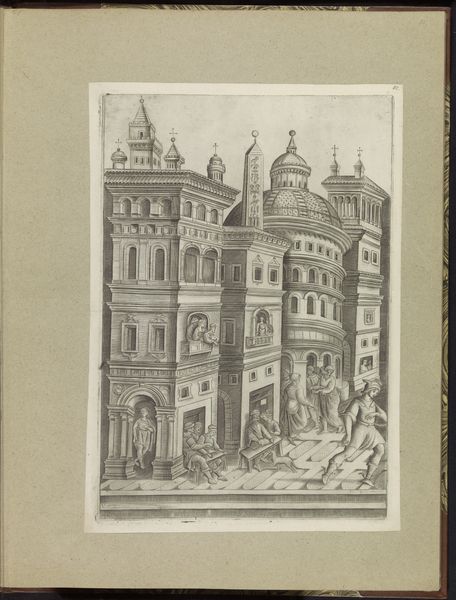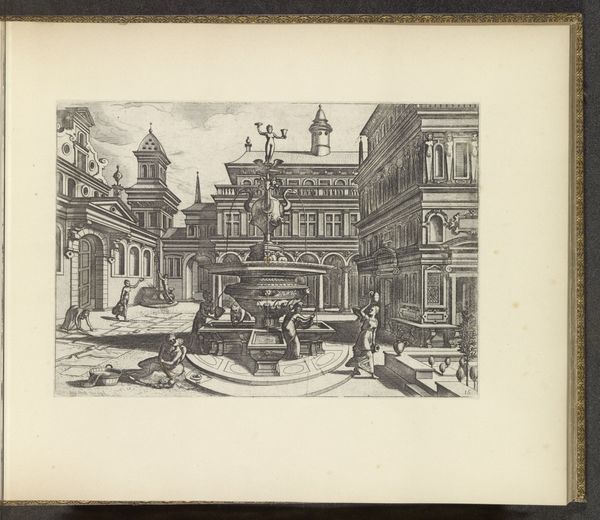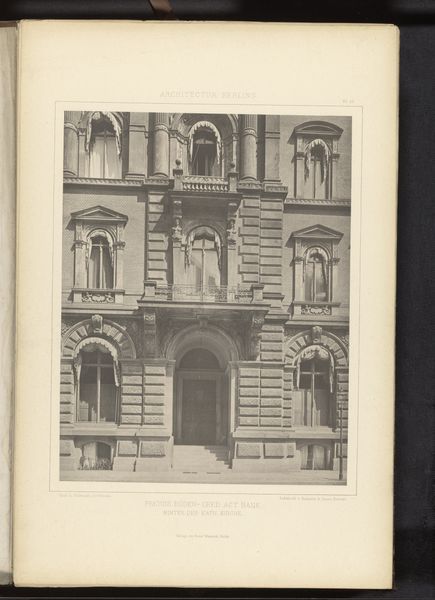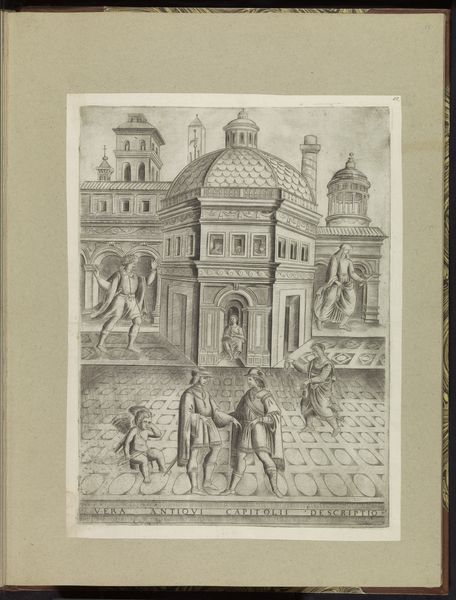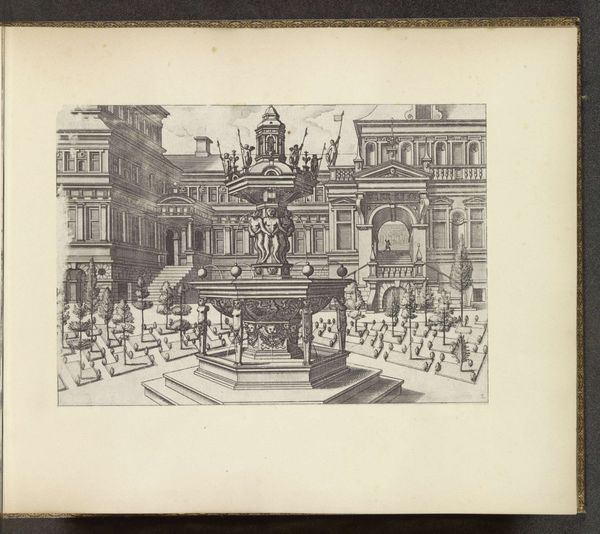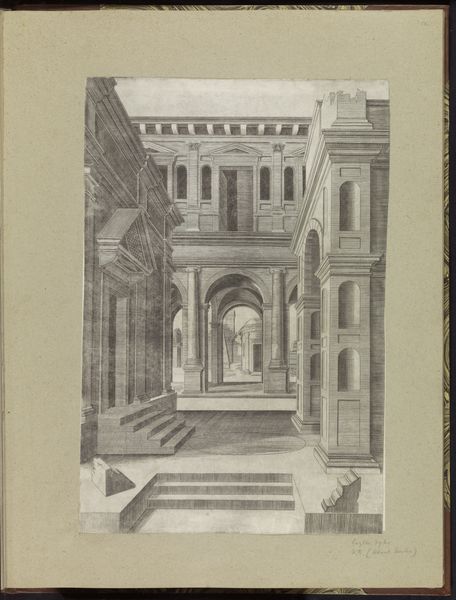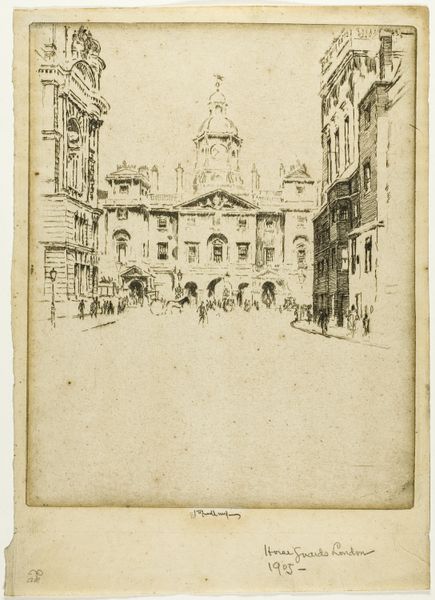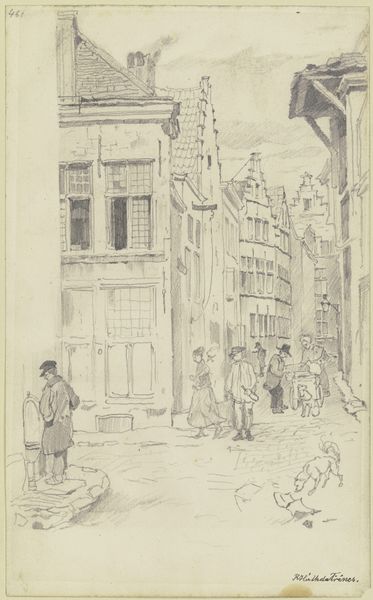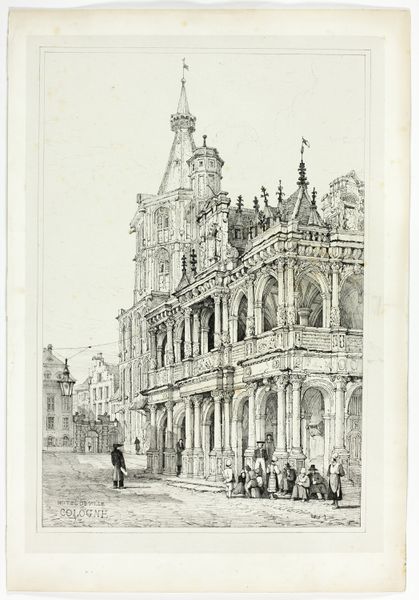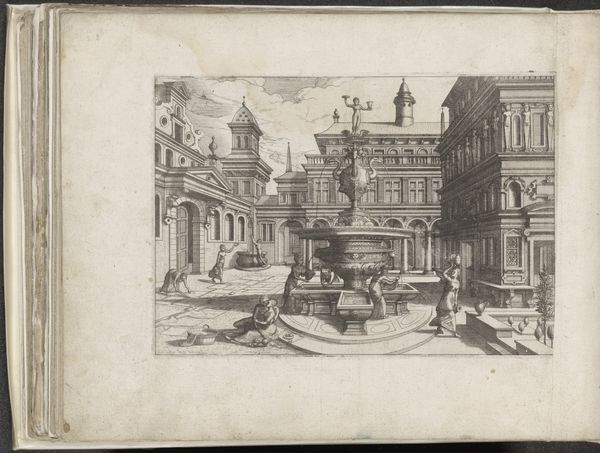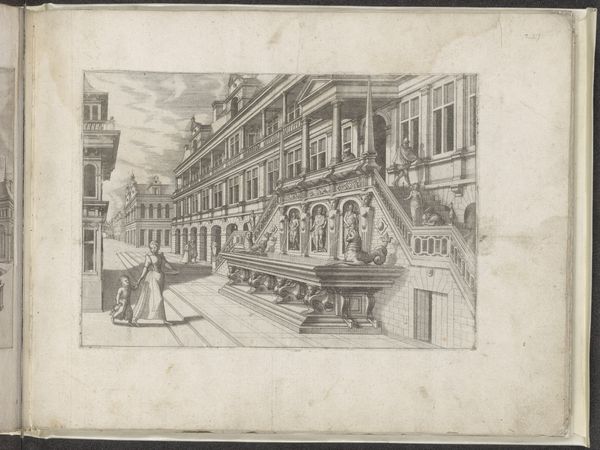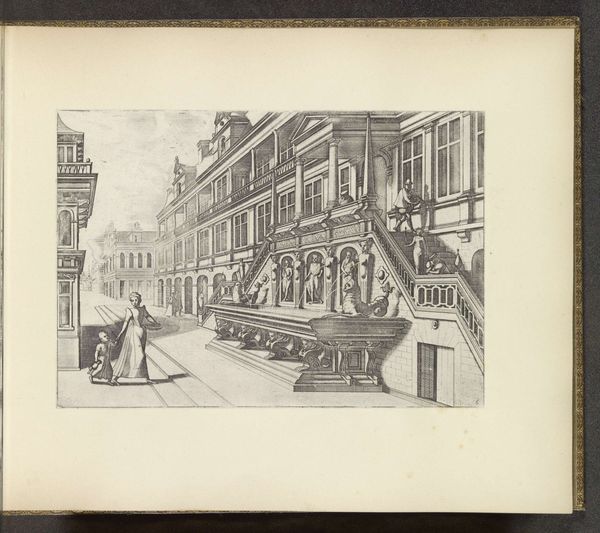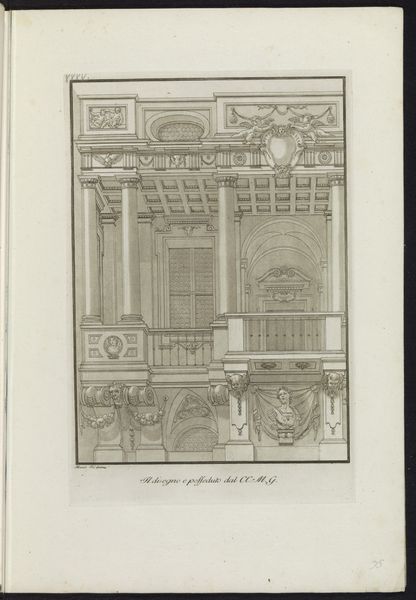
drawing, print, paper, engraving
#
drawing
# print
#
paper
#
11_renaissance
#
ancient-mediterranean
#
cityscape
#
history-painting
#
engraving
Dimensions: height 425 mm, width 291 mm
Copyright: Rijks Museum: Open Domain
Editor: So, this is "Gebouwen op het oude Capitool te Rome," Buildings on the Old Capitoline Hill in Rome, made sometime between 1595 and 1622. It's an anonymous engraving printed on paper, and it kind of feels like a stage set. There's a strange blend of classical architecture with figures that feel very much of their own time. What can you tell me about this? Curator: This image speaks volumes about the Renaissance’s relationship with antiquity. Notice how the architectural structures are adorned with classical friezes and figures, yet the people populating the scene are dressed in contemporary clothing. This juxtaposition wasn’t just aesthetic; it reflects a desire to legitimize contemporary power and culture by linking it directly to the glory of Rome. Editor: So it’s less about accurately depicting ancient Rome and more about... borrowing its prestige? Curator: Precisely! The Capitoline Hill held immense symbolic weight as the heart of ancient Roman government and religion. By placing contemporary figures within this historical setting, the artist is making a statement about continuity and perhaps even aspiration. It suggests that the values and achievements of ancient Rome were alive and well in their own era. Do you think that it suggests some idealization, perhaps? Editor: It definitely does feel idealized, maybe even a little staged like I said earlier. So, this image tells us not just about how they saw ancient Rome, but about how they wanted to see themselves. Curator: Exactly. Consider how this print might have circulated – who would have been the audience? It speaks to a desire to connect with the past but also stake a claim in the present and future of Rome itself. It’s political and cultural messaging disguised as a cityscape. Editor: That makes a lot of sense. It really does shift my perception of the piece – seeing it less as a straightforward depiction and more as a carefully constructed statement. Curator: Indeed. It makes you think about the public role of art and the politics embedded in imagery. And understanding those dynamics really enriches how we view it, wouldn’t you agree?
Comments
No comments
Be the first to comment and join the conversation on the ultimate creative platform.
